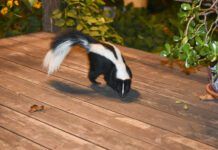[Updated March 23, 2018]
Most essential oils used in aromatherapy are obtained by steam distillation, at the end of which a small amount of essential oil is extracted from a large amount of water. But that isn’t just any water, for the liquid that condenses after steam drives volatile material from blossoms, stems, leaves, fruit, roots, or seeds is itself an aromatic substance with significant healing properties.
That liquid is called a hydrosol, hydrolat, hydrolate, flower water, floral water, or distillate water. Regardless of name, hydrosols are aromatherapy’s hot topic – and for pet lovers, they’re ideal. They combine the therapeutic benefits of essential oils, which they contain in minute amounts, with the safety of herbal teas. Make that very strong herbal teas, for hydrosols are 20 to 30 times more concentrated than any steeped or simmered tea.
Hydrosols have become buzzword ingredients in cosmetics and skin care products, where they are valued for their pleasant fragrances, hydrophilic (water-loving) acids, and mild but effective anti-inflammatory, astringent, and antiseptic properties.
The most familiar hydrosols are rose water, orange blossom water, and lavender water. But these culinary and hand lotion ingredients are usually made from water and perfume oils, not by steam distillation. The difference is significant, for true hydrosols contain water-soluble components that never appear in essential oils. As a result, hydrosols are gentle, powerful, versatile, therapeutic, and unique.
Quality Hydrosols Are Hard to Find
The first step toward improving your dog’s health with hydrosols is finding them. Until recently, few essential oil distributors sold hydrosols, and even now they’re unusual. That’s because hydrosols take up more space, cost more to ship, require more careful storage, and have a far shorter shelf life than essential oils. In addition, all of the quality concerns that apply to essential oils apply to hydrosols. For best results, buy from recommended suppliers (see sidebar list) and treat hydrosols with care.
In her book, Holistic Aromatherapy for Animals, Kristen Leigh Bell explains that the best suppliers identify hydrosols by species, country of origin, growing method, plant parts used, date of distillation, and other details. Most hydrosols have a shelf life of one to two years, so inquire about expiration dates. In addition, ask how the hydrosol has been stored, preferably refrigerated in sterilized dark glass bottles that receive minimal handling. Were preservatives added? Ethyl alcohol, grapefruit seed extract, and synthetic chemicals are common preservatives, but therapeutic-quality hydrosols are preservative-free.
Ask for samples. Good suppliers offer free or low-priced samples for tasting and testing.
Only Use Hydrosols That Have Passed A Test
“As soon as your hydrosols arrive,” says Bell, “wash your hands thoroughly with soap and water and pour a small amount into a clean glass. Hold it up to the light and check for particulate matter or a milky appearance. Fresh hydrosols are clear or have only a hint of color and should not contain a surface residue or large chunks or strings of particulate matter, all of which are evidence of a bacterial ‘bloom.’ Report spoilage to your supplier at once.”
Next, she says, “Smell your hydrosol. It won’t smell exactly the same as its essential oil, but it shouldn’t smell spoiled or rancid. Sniff carefully for any trace of alcohol. If all seems okay, taste it. The more you know about hydrosols and the more you use them yourself, the more effectively you’ll use them for your dog.”
Store hydrosols in the refrigerator or, if that’s not possible, in a cool, dark location. Some suppliers ship hydrosols in spray bottles, which prevents air from entering the bottle whenever you use it. Bottles that are frequently opened are easily contaminated.
Unlike essential oils, hydrosols are either slightly acidic like lavender hydrosol (5.6 to 5.9 pH) or very acidic like rock rose (2.9 to 3.1 pH). Suzanne Catty, one of the world’s leading authorities on these gentle yet powerful products, lists 70 hydrosols and their optimum pH values in her groundbreaking book, Hydrosols: The Next Aromatherapy. Catty recommends using special pH test strips – available at a low cost from home-brewing catalogs – to check a hydrosol’s shelf life. As soon as it arrives, check your hydrosol’s pH, and write this value on its label or in a notebook, along with the date. Report any questionable pH values to your supplier for a refund or replacement.
After six months, test the hydrosol’s pH again. Any value change of 0.5 or more indicates the presence of bacterial growth. Note that added preservatives affect a hydrosol’s pH, giving you another reason to rely on this method for testing a hydrosol’s quality.
Hydrosols are best replaced after their expiration dates. Use “expired” hydrosols that are still fresh in bath water or your dog’s shampoo, as air fresheners, as a dog bedding freshener, or in floor, dish, or laundry wash or rinse water. If you have plants that like acid soils, water them with expired hydrosols. Spoiled hydrosols should go down the drain or into the garden or compost pile.
Most Common Uses for Hydrosols on Dogs
Once you find a therapeutic-quality hydrosol, you can do all kinds of things with it. Here are some suggestions from Suzanne Catty.
To give a hydrosol in food or water, start with ½ to 1 tablespoon per day for a dog weighing 50 – 70 pounds. For toy dogs, give 1 to 1½ teaspoons per day, preferably diluted. For large and giant breeds, give up to 2 or 3 tablespoons per day. Adjust the following recommendations (based on 50 – 70 pounds) for your dog’s size.
For digestive problems, divide a daily dose of ½ to 1 tablespoon of coriander, peppermint, yarrow, fennel, carrot seed, oregano, basil, or rosemary hydrosol between water and food for three weeks.
For diarrhea, feed ½ tablespoon undiluted cinnamon bark hydrosol every 30 minutes for four doses, then hourly for four doses. “This usually does the trick,” Catty explains. “The cinnamon not only calms the stomach and digestive tract but also helps kill any bacterial cause of the diarrhea.”
For urinary tract problems, you can give your dog ½ tablespoon juniper berry, yarrow, cypress, sandalwood, or goldenrod hydrosol three times daily plus 1 tablespoon hydrosol in the water dish daily for three weeks. In case of infection, try winter savory, oregano, scarlet bee balm, or thyme (chemotype thymol).
For respiratory problems, give 1 tablespoon hydrosol twice or three times daily, and rub 2 tablespoons undiluted hydrosol on the chest and abdomen twice daily for three weeks. Try eucalyptus (Eucalyptus globulus), inula, rosemary (any chemotype), thyme (any chemotype), oregano, or winter savory, or a blend of two or more. Catty recommends supplementing this treatment with the use of essential oils, such as a blend of equal parts ravensara, Eucalyptus radiata, and palmarosa, with a drop or two of patchouli or vetiver. This blend can be dabbed onto the dog’s bedding or diffused into the air with a nebulizer, available from aromatherapy supply catalogs.
For additional recommendations for pet use from Suzanne Catty, see Hydrosols: The Next Aromatherapy.
You Can Be Creative
One of the easiest things to do with hydrosols is add them to your dog’s shampoo. Try diluting a natural shampoo or liquid soap (one that doesn’t contain synthetic chemicals) with an equal quantity of hydrosol. Do the same with your dog’s conditioner, and add a splash of hydrosol to the final rinse water. The hydrosols of flea-repelling essential oils, such as cedar or rosemary, can help keep your dog flea-free. Where ticks are a problem, use any hydrosol that has a rose fragrance, such as rose geranium, palmarosa, or true rose – although true rose is so expensive and luxurious, you’ll want to save it for spritzing on your own face.
In Madison, Tennessee, Marge Clark runs Nature’s Gift, a leading supplier of therapeutic-quality hydrosols and essential oils. “Many of our customers have dogs,” she reports, “and it’s important that these animals not experience an aromatherapy overdose. A dog’s nose is so sensitive that exposure to essential oils might be painful. The hydrosols are safe, gentle, and effective. My dog, Max, is an 11-year-old, 5-pound Pomeranian. Because of his tiny size, I have to treat him the way I would a human infant. Hydrosols are perfect for him.”
Clark’s favorite hydrosols for canine application are yarrow for hot spots and other skin irritations; lavender, the all-purpose “must-have” hydrosol, which is gentle, soothing, relaxing, and antibacterial; St. John’s wort, which relieves sore muscles and other pain; and neroli, which alleviates stress and anxiety. Helichrysum is her best-selling hydrosol and, at $22 for 4 ounces, the most expensive. This powerful anti-inflammatory is best known for its skin-healing properties.
Jenine Stanley, who lives in Columbus, Ohio, with two Golden Retriever service dogs, has experimented with Nature’s Gift hydrosols and recommends three “essentials” to all of her friends with guide dogs.
The first is tea tree hydrosol, which provides most of the benefits of tea tree oil without the problems that oil can cause. Tea tree oil is controversial because its application has caused temporary paralysis in some dogs and skin burns in others. Organic tea tree hydrosol, which Clark considers “totally safe,” is Stanley’s favorite for drying, disinfecting, and clearing up oozing hot spots or lick granulomas.
“Tea tree hydrosol is also an incredible ear wash for killing yeast in dogs’ ears,” says Stanley. “I saturate several cotton balls and clean the ear as usual. If the ear is crusty or moist, I apply the hydrosol directly to the ear canal – outdoors to accommodate head shaking to clear the debris and liquid.”
Oregano hydrosol has proved valuable for cleaning cuts, insect bites, stings, and even hot spots that have become infected. “I wash the area first with oregano,” Stanley explains, “then apply tea tree hydrosol as a drying agent. Yes, your dog will smell like pizza, but he will be much happier without the infection.”
Her third hydrosol of choice is witch hazel. “It’s an effective drying agent,” she says, “and it keeps the skin inside the ears at an appropriate pH. Witch hazel hydrosol smells good, is soothing, and helps prevent what we affectionately call ‘swamp ears.’ As our two dogs are guide dogs, they are often in tight quarters in public, airplane cabins, elevators, and crowded store lines. Using the hydrosols keeps them fresh, clean, and free from infections.”
At Prairieland Herbs in Woodward, Iowa, Maggie Julseth Howe and Donna Julseth experiment with hydrosols daily. “My Great Pyrenees had chronically ‘dirty’ ears,” says Howe, “and comfrey hydrosol was a wonderfully gentle way to keep them clean. We have also used comfrey hydrosol as an eyewash – not on our dogs, because the occasion has not arisen, but on kittens and a horse, with wonderful results.”
Bathing her Great Pyrenees is such an undertaking that Howe uses other means whenever possible. “A good brushing and a few spritzes of lemon balm hydrosol do wonders for coat shine and smell,” she says. “Commercial dog sprays send her running for the nearest patch of dirt to roll in, but like most dogs, she seems to tolerate the gentle, all-natural scent of hydrosols much better. Last but not least, a light spritz of a mint or other pleasantly scented hydrosol is a great way to freshen up a dog’s favorite bed or sleeping place, or even your couch or car seats.”
Finding Reliable Hydrosol Sources
According to Suzanne Catty, the major problem relating to hydrosols is not contamination, but rather fake or synthetic products sold as hydrosols, real hydrosols to which preservatives and/or stabilizers have been added, or real hydrosols that were improperly collected at distillation, resulting in nontherapeutic, unstable, and only slightly aromatic waters. “True therapeutic hydrosols that are free from preservatives, alcohol, or stabilizers and properly handled are a healing boon for animals of all kinds,” Catty says.
Suppliers find these hydrosols through research, networking, testing, and trial and error.
“If I love a distiller’s hydrosols,” says Marge Clark, “I’m a loyal and enthusiastic customer forever. I never, ever, make a sourcing decision based on price. I’ve done that and regretted it! We have the majority of our oils tested by a well-known chemist with gas chromatography and mass spectrometry, assuring that an essential oil is not adulterated, that it falls within the ‘expected range’ for components. But that testing will not distinguish between a so-so specimen and an extraordinary one. Personal selection makes that distinction, and it involves looking for intangibles, like the vibrancy or life in the aroma. Sometimes there is an energetic difference that can be felt.”
We recommend that you start with suppliers listed below and learn everything you can from them. They are generous with information, recommendations, and suggestions – and they sell superior-quality hydrosols, everything from familiar lavender to rare “boutique” hydrosols like cardamom or comfrey. The only factor that will interfere with your hydrosol collection is availability, for hydrosols are seasonal items that often sell out. When that happens, you have to wait for the next distillation.
Are any hydrosols potentially dangerous for dogs? Clark suggests avoiding the topical application of Australian lemon myrtle (Backhausia citriodora) because this powerful antibacterial hydrosol, which is best used as a room spray, can irritate the skin. “We don’t use it on our own skin,” she says, “so I wouldn’t use it on my dog’s.”
Hydrosols are still so new on the aromatherapy scene that discoveries about their benefits are being made every day. You and your dog can be in the forefront of this exciting new therapy.
HYDROSOLS FOR DOGS: OVERVIEW
1. Use a hydrosol for a gentle, effective treatment that can complement your dog’s conventional care.
2. Buy products only from reputable sources; test the quality (with pH test papers) regardless of the source.
3. Use hydrosols as a topical mist, dropped directly into your dog’s mouth, in her food and water, and/or in her shampoo.
4. Keep track of the hydrosol’s expiration date. Discard and replace expired products.
Also With This Article
“Aromatherapy For Dogs”
“Roses Have Holistic Value for Dogs”
“Is Your Dog Afraid of Thunder?”
CJ Puotinen is the author of The Encyclopedia of Natural Pet Care (Keats/McGraw-Hill) and Natural Remedies for Dogs and Cats (Gramercy/Random House). She also wrote the foreword for Kristen Leigh Bell’s Holistic Aromatherapy for Animals.






